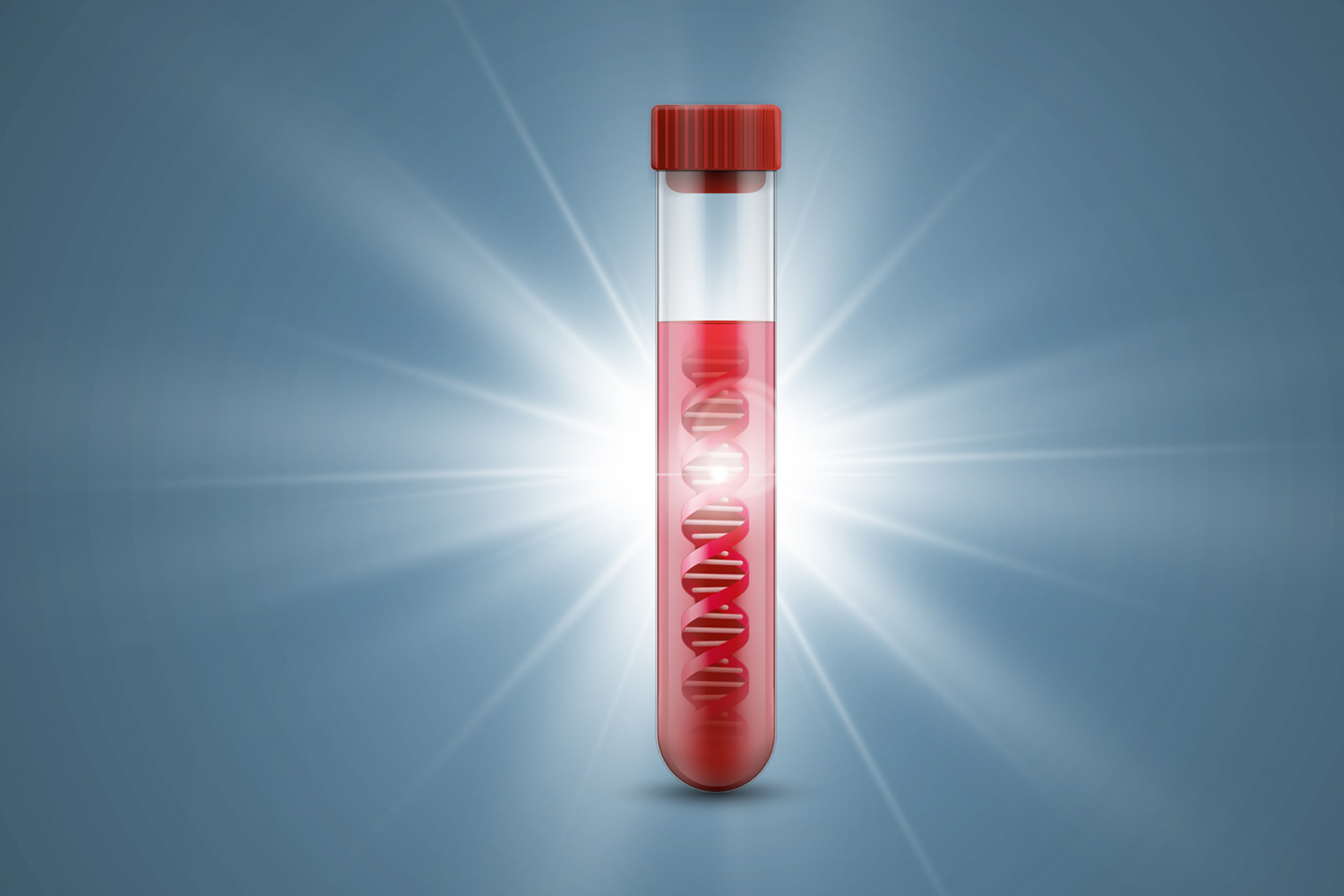WHEN SOMEONE HAS A TUMOR, some of the cancer cells and DNA circulate in the bloodstream. Clinicians and researchers can detect these cells and DNA fragments with blood tests called liquid biopsies.
A liquid biopsy is safer and less invasive than a traditional biopsy because it’s based on an ordinary blood draw. The laboratory test is able to detect circulating tumor cells (CTCs) or circulating tumor DNA (ctDNA) fragments, two biomarkers that can indicate when residual disease is present.
Medical oncologist Pashtoon Kasi, the director for liquid biopsy research at the Englander Institute for Precision Medicine of Weill Cornell Medicine in New York City, notes that liquid biopsies are fulfilling an important role for cancer surveillance—which detects cancer in someone after they receive treatment intended to cure them. Research suggests that liquid biopsies can detect residual disease in colorectal cancer patients nine to 12 months earlier than imaging tests such as CT scans or MRIs. Liquid biopsies also have virtually no false positives in colorectal cancer, Kasi says, which suggests test results that detect CTCs or ctDNA can predict a relapse before cancer shows up on scans or causes symptoms.
Despite these advantages, questions remain regarding how to use the information gained by surveillance liquid biopsies. Cancer Today spoke with Kasi about using liquid biopsies for cancer surveillance, particularly in colorectal cancer.
CT: Why are liquid biopsies more effective and reliable for some cancers, such as colorectal cancer, than for others?
KASI: Liquid biopsies originated in the world of prenatal diagnostics, where the unborn child is shedding fetal DNA in the mother’s bloodstream. A tumor also sheds DNA in the bloodstream, but there has to be enough shedding going on to be able to detect it. Some cancers, such as colorectal cancer, shed more circulating tumor DNA, or ctDNA, in the bloodstream, making it easier for the liquid biopsy to detect colorectal cancer than other cancer types that shed less ctDNA.
CT: How are liquid biopsies used in surveillance after treatment?
KASI: There are liquid biopsies designed to look for leftover cancer DNA in somebody’s bloodstream after they’ve had curative surgery. They call it MRD—minimal residual disease or molecular residual disease. There are at least two liquid biopsies already in use in the clinic for colon cancer specifically.
In that scenario, a positive test result will tell you the person is not cured. There are no false positives. But a negative result could mean you are truly cured, or that you have so little cancer that even the best of tests doesn’t pick it up or that there could be background noise that makes the cancer harder to find. The technology for these blood tests is getting more sensitive, so we’ll be able to pick up even lesser amounts of cancer in more difficult post-surgical situations when the body is healing and creating that background noise.
CT: What questions remain regarding the use of liquid biopsies in surveillance?
KASI: The questions now revolve around what to do with the results. How does it impact the treatment? Am I going to change the treatment based on somebody’s minimal residual disease assay? Am I going to forgo chemo in somebody who tests negative? Should we escalate chemo or give somebody more aggressive chemo if we know they’re not cured? These are active questions being answered right now through clinical trials using commercially available assays.
Some folks are arguing that liquid biopsy results are adding anxiety, and that’s not an unreasonable claim. The counterpoint is that for certain cancers, if we detect it early and it’s only in a few places, even when it has spread, we can still try to cure it. Some of these trials are trying to answer that question: Is intervening earlier helpful or not? Will it prolong survival or not?
Liquid biopsy results may help decide the frequency of somebody’s scans and follow-ups. In the long term, I think it might even decrease the number of scans for some patients. If you use a noninvasive blood test instead of a whole-body CT scan, PET scan or MRI, then you could have more scans for somebody whose liquid biopsy results indicate they’re not cured versus fewer scans for somebody who tests negative.
CT: What’s important to consider before patients undergo liquid biopsies during surveillance?
KASI: It’s important to have shared decision-making before the test so you know what you’re going to do with the results of the test. I have had some patients who don’t want to do the test because it can cause additional anxiety. A lot of my patients and caregivers would rather know than not know, even if the test reveals residual disease. For them, it actually provides comfort and solace to be more proactive about looking for treatment options and trials.
Cancer Today magazine is free to cancer patients, survivors and caregivers who live in the U.S. Subscribe here to receive four issues per year.





